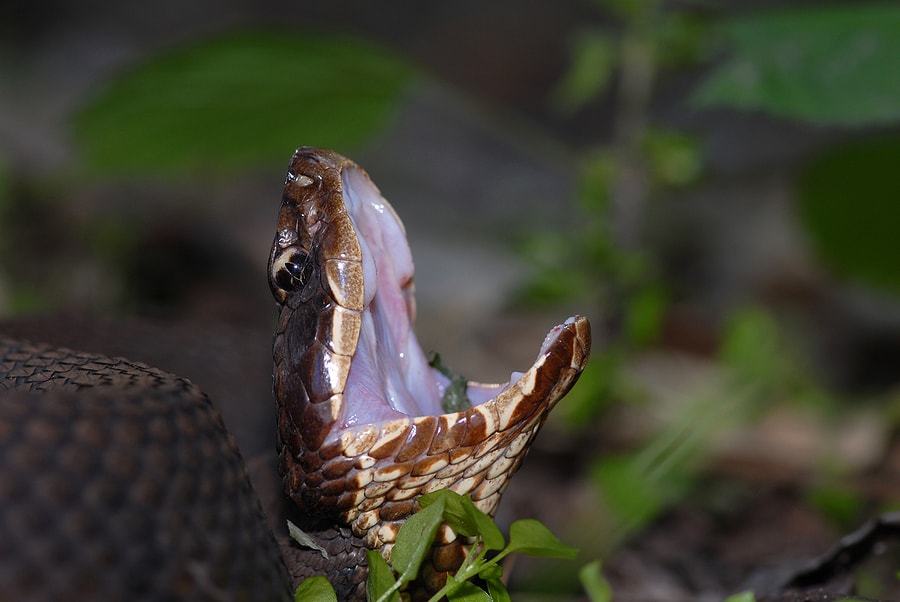As the weather warms up, snakes will emerge to take advantage of the warm weather and kick start their mating season. One of the snakes you’ll start to see this spring is the water moccasin. This venomous snake, also known as the cottonmouth, is a semi-aquatic snake found throughout the southeastern United States. The water moccasin is often mistaken for other snakes, so recognizing this snake in the wild is critical.
Water moccasins have large, triangular shaped heads with large jowls (due to their venom glands). Their eyes have a dark line through them and elliptical-shaped pupils. These snakes are large in size, ranging from 24″ to 48″. They have thick, heavy bodies when compared to their length. Their coloration can vary. These snakes can be completely brown or black (usually adults) or brown or yellow with dark crossbands. Adults tend to be darker while juveniles tend to be more brightly colored. They also have dark brown or yellow blotches on their bellies and black on the underside of their tails.
Water moccasins have facial pits they use to sense heat from predators and prey. They got their cottonmouth alias because the inside of their mouths are white in color. They will gape when they feel threatened, exposing this white color in an attempt to scare the threat away.
These snakes are found throughout the southeast, as far north as Virginia. They can be found in almost any freshwater habitat. They are active both during the day and at night, but will commonly hunt at night, especially during the hotter seasons of the year. They eat a variety of prey, including lizards, amphibians, other snakes, small turtles, birds, fish, mammals, and even baby alligators. They mate in the early summer.
Water moccasins are often mistaken for other nonvenomous water snakes. While the water moccasin has a thick body and short, thick tail, nonvenomous water snakes have more slender bodies and thinner tails. The shape of the head is also important. Water moccasins have large, blocky heads with pronounced necks that are much more narrow than the head. Water snakes, on the other hand, have more slender heads with necks that are more comparable in width to their heads.
While it can be tempting to run away or grab the closest thing you can to kill a snake when you come across it, the best practice is to leave it alone and slowly back away. In the case of a venomous snake, contact your local pest control company who can implement safe snake removal and relocation techniques.

